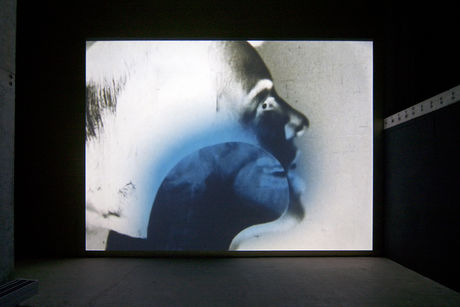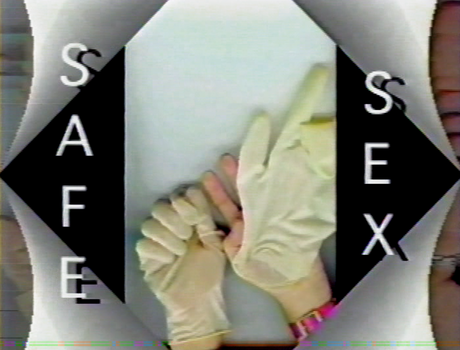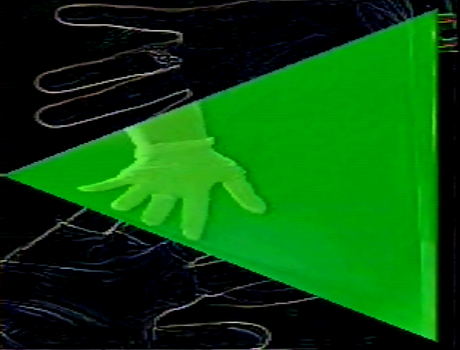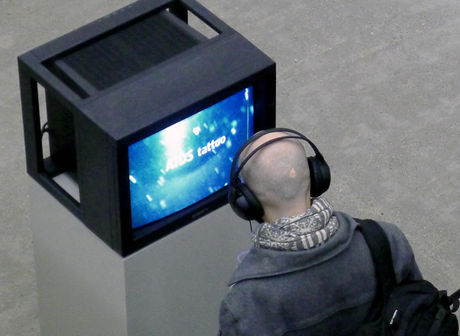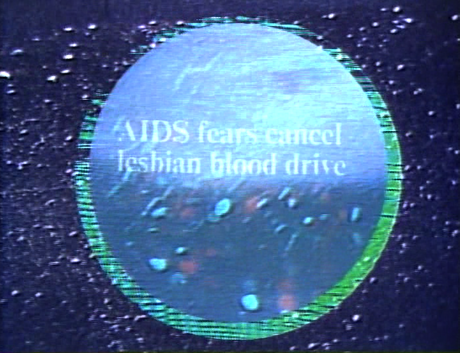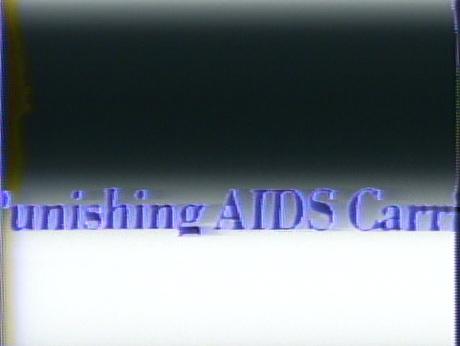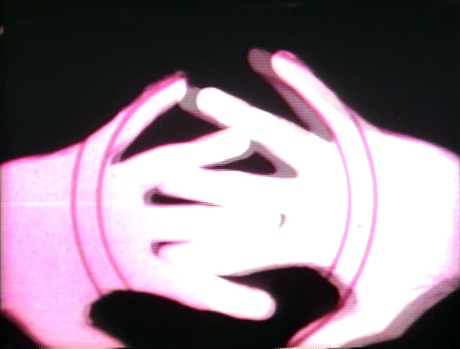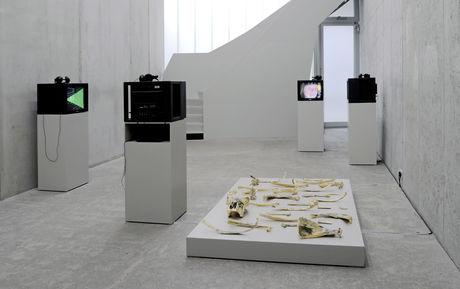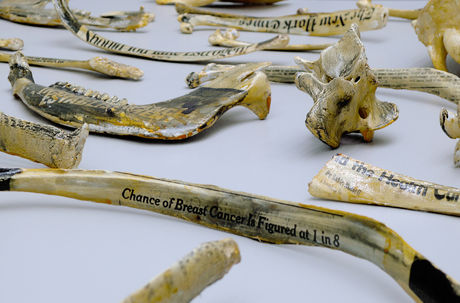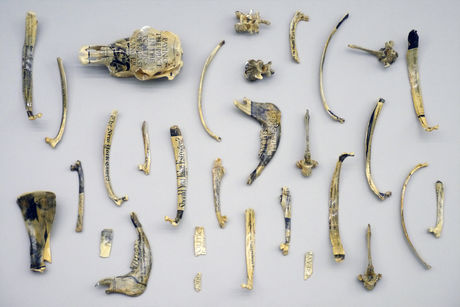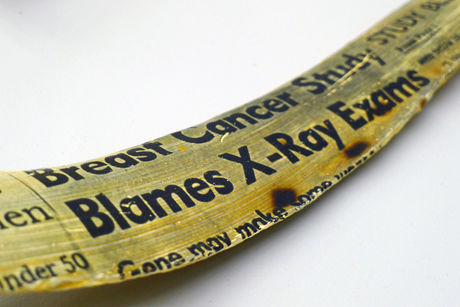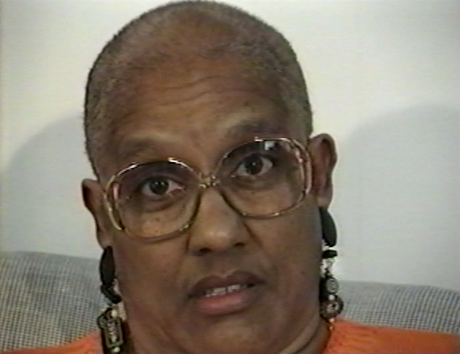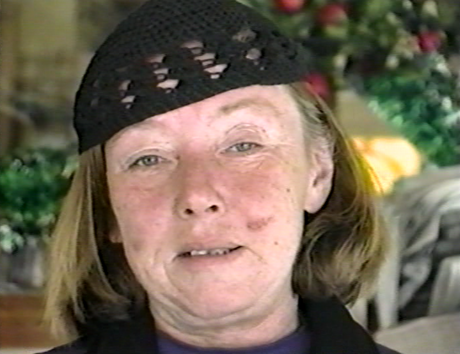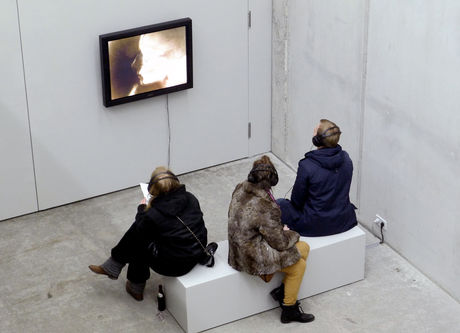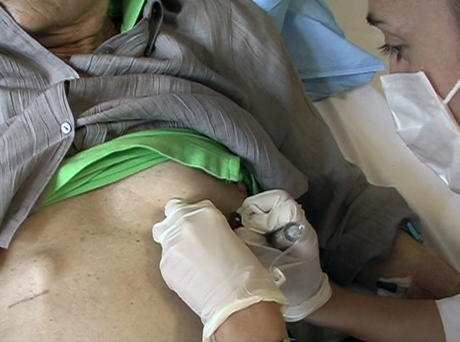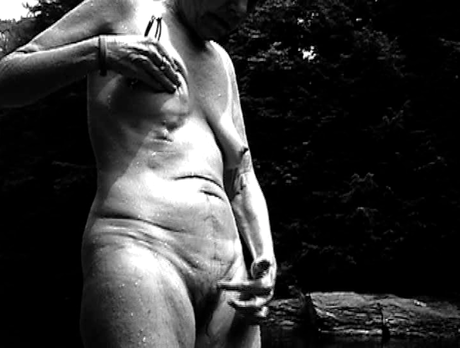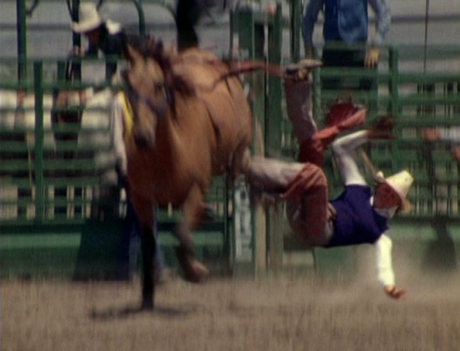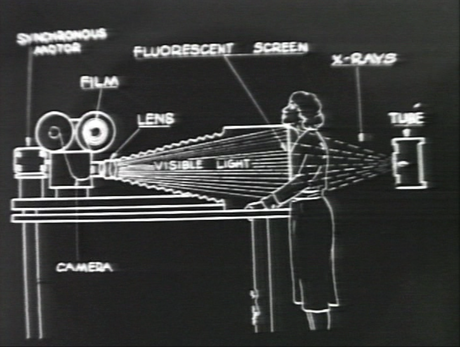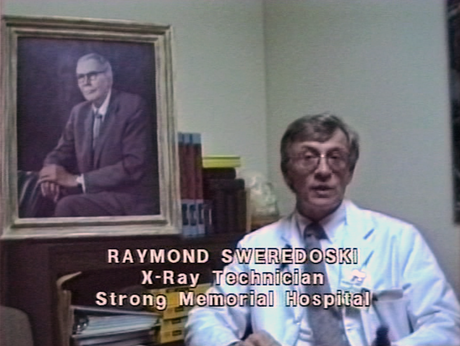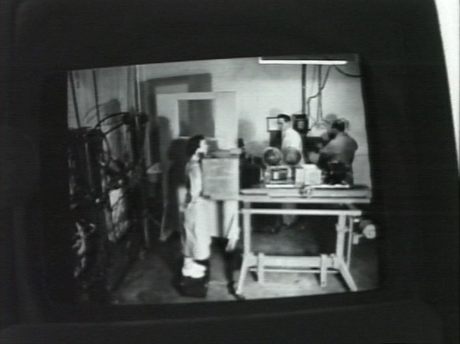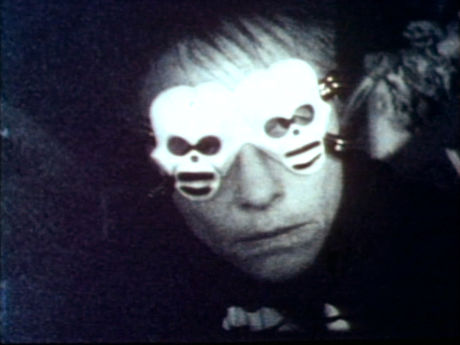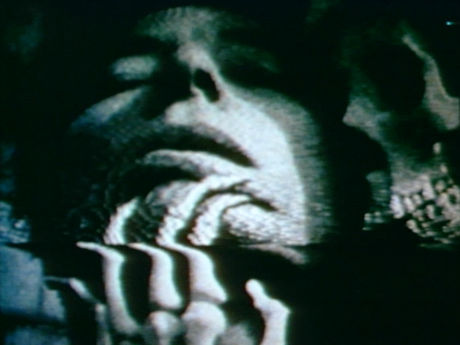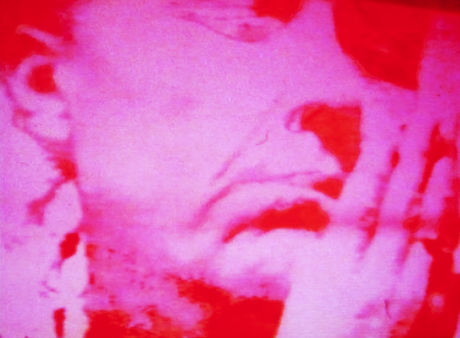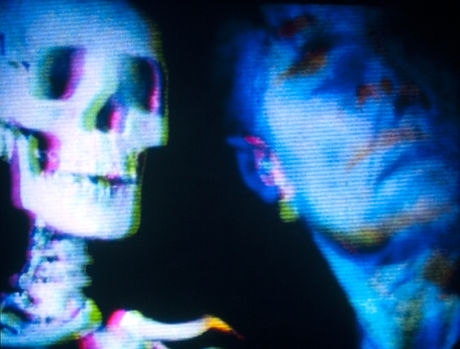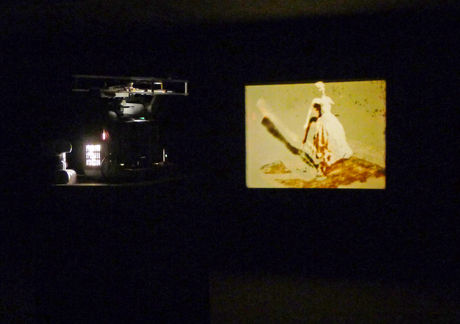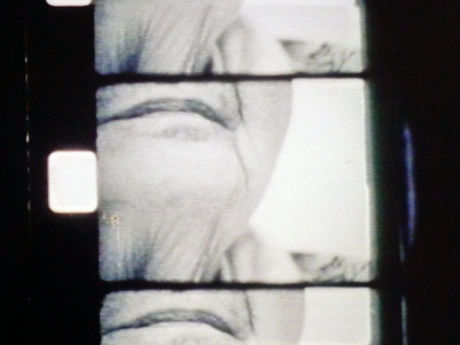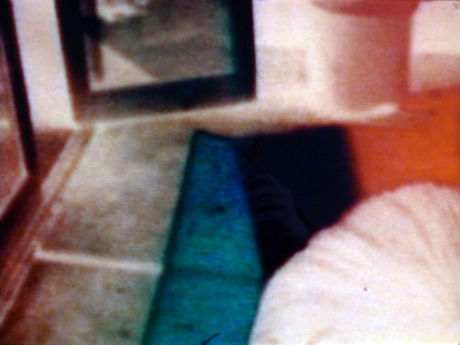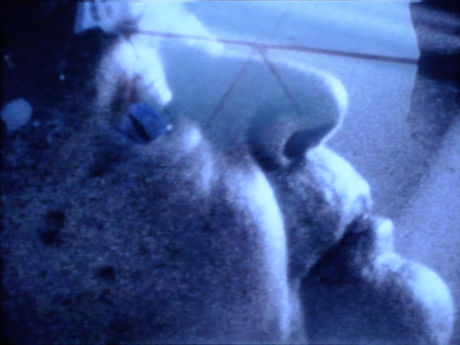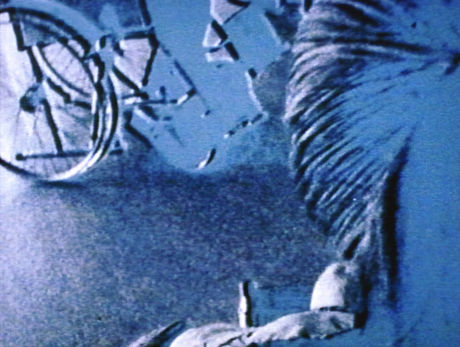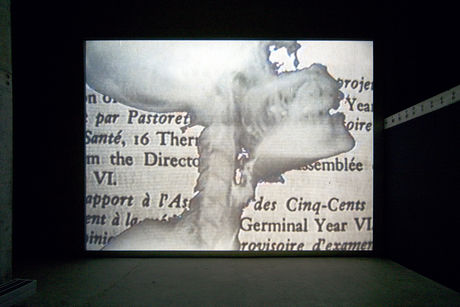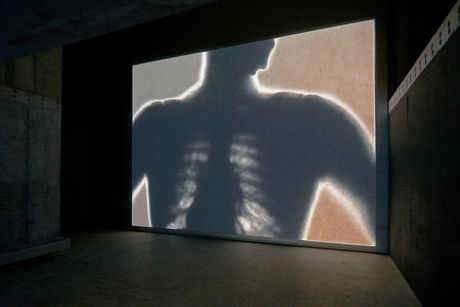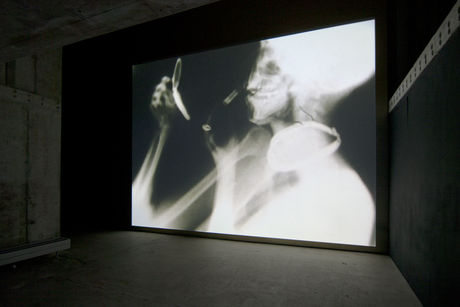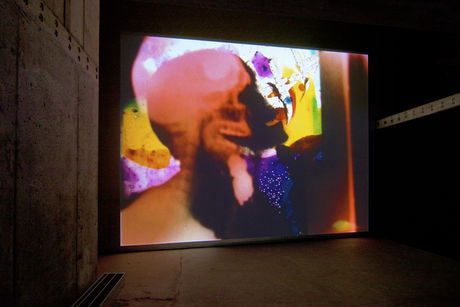Feb 16–Apr 14, 2013
The experimental filmmaker, documentarist, and visual artist Barbara Hammer, who was born in Hollywood in 1939, has created one of the most influential oeuvres of Queer Cinema. Over the course of a lifetime, the pioneering lesbian film activist has put together a comprehensive manifesto of feminist perspectives. Our first solo exhibition of Barbara Hammer’s work, in 2011, emphasized her contributions to the (self-)representation of lesbian love and sexuality in the 1970s; in this new show, by contrast, we focus on a parallel strand in her oeuvre that commences in the mid-1980s: Hammer’s engagement with illness, aging, and death.
The centerpiece of the exhibition, which was designed in collaboration with the artist, is “Sanctus” (1990). Hammer uses moving X-ray pictures Dr. James Sibley Watson produced in the 1950s that capture—usually female—bodies in motion.(1) Watson had turned his study subjects’ bodies into a spectacle, subjecting them to visualization and medico-technical manipulation that cut to the quick; Hammer exalts these bodies, presenting them now as threatened, now as threatening, restoring their sensual presence. She copies, crops, and cross-fades Watson’s archival footage, painting on it and using chemicals to burn it. Hammer animates a danse macabre of female skeletons. This is more than a feminist and erotic reappropriation of the female body beset by technology and pathology—it is its canonization, supported on the original soundtrack by the composer Neil B. Rolnick’s computer-generated mass “Sanctus.”(2)
Like “Sanctus,” “Optic Nerve” (1985), Barbara Hammer’s contribution to the 1987 Whitney Biennial, is a principal work of her experimental practice. The film is based on 8 mm footage showing her 97-year-old grandmother. Physical decline, the life-sustaining function of medical equipment, the sense of being at the mercy of time and technology: Hammer figuratively applies these to her own use of the celluloid material and the creation of the soundtrack. The result is a disturbing dovetailing of the physiological and filmic apparatuses. The grandmother’s blindness in one eye, her loss of spatial vision, leads Hammer to the limits of her medium, away from the naturalism of three-dimensional visualization and toward an existential minimalism: “Optic Nerve” turns into a flickering, hazy, mechanical conglomerate, a filmic portrait on the edge of vision.
In “Vital Signs” (1991), Barbara Hammer demonstratively transforms the horror of death into its opposite. She tenderly cares for a human skeleton, feeding it, dressing and caressing it, taking it for walks in the dark cabaret of an intimate relationship beyond death. She confronts pain and fear rather than repressing them. In 1986, she makes “Snow Job: The Media Hysteria of AIDS,” in which she examines the public ignorance, stigmatization, and instrumentalization of illness and death. For “8 in 8” (1994), which criticizes the media’s coverage of breast cancer, the artist shoots her own interviews with patients. In a programmatic act, she transfers newspaper reports about rising cancer rates, therapies, their consequences and marketing onto bones.
In 2008, her perspective shifts. “A Horse Is Not a Metaphor”(3) documents her own struggle with cancer. Hammer shoots inside the hospital, where she herself is now an object in the medical apparatus; filming serves her as a way to maintain her own subjecthood. The digital handheld camera coolly registers her ailing and swollen body under clinical observation. The film “is an undisguised bit of activism, a frank plea for survival, and an everyday chronicle of what a person must endure.”(4) Hammer’s presenting herself in this fashion is not an act of narcissism. Since the early 1970s, her films have put a feminist demand that is also a core piece of democratic culture into practice: if no representation is available in which you recognize yourself, then represent yourself.
(1) In “Dr. Watson’s X-Rays” (1991), Hammer documents the circumstances in which the film was made and its repercussions.
(2)/(4) See Ara Osterweil, “A Body Is Not a Metaphor: Barbara Hammer’s X-Ray Vision,” Journal of Lesbian Studies 14, no. 2–3 (2010).
(3) Music: Meredith Monk.
Text and Photos: Alexander Koch
Translation: Gerrit Jackson
FRIEZE (Issue 155, May 2013, page 229, by Matthew Burbidge)
JUNGLE WORLD (Issue 12, Mar 21, 2013, by Tim Stüttgen)
FRANKFURTER RUNDSCHAU (by Irmgard Berner)
BERLINER ZEITUNG (Mar 5, 2013, by Irmgard Berner)
BERLIN ART PARASITES (Mar 5, 2013, by Marie J Burrows)
Downloads:
